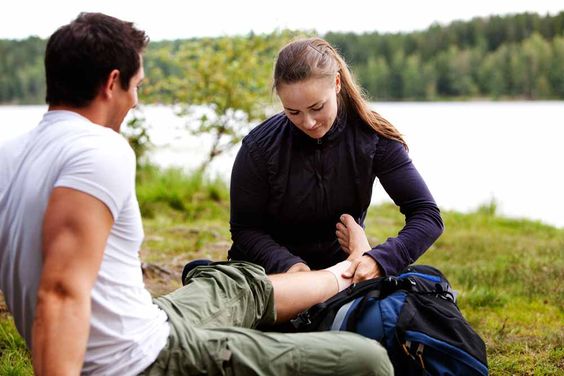Introduction:
Summer is the perfect time to enjoy the great outdoors, but it's important to be prepared for potential injuries. Whether you're hiking, biking, swimming, or just playing in the park, accidents can happen. Knowing how to identify and treat common outdoor injuries can help you stay safe and enjoy your time outside.

This blog post will cover the basics of caring for common outdoor injuries, from minor cuts and scrapes to more serious issues like sprains and fractures. Remember, this information is not a substitute for professional medical advice. If you have a serious injury, seek medical attention immediately.
Common Outdoor Injuries and First Aid:
Cuts and Scrapes:
Cuts and scrapes are among the most frequent outdoor injuries. To treat them, you should first control the bleeding by applying direct pressure. Once bleeding subsides, clean the wound thoroughly with soap and water, apply an antibiotic ointment, and cover it with a sterile bandage.
Sprains and Strains:
Sprains and strains are common injuries that affect your ligaments and muscles. The RICE method is recommended for these injuries:
- Rest: Avoid activities that stress the injured area.
- Ice: Apply ice packs for 15-20 minutes at a time, several times a day.
- Compression: Use a compression bandage to reduce swelling.
- Elevation: Keep the injured area elevated above your heart.
Heat Exhaustion:
Heat exhaustion can occur after prolonged exposure to high temperatures. Symptoms include heavy sweating, headache, dizziness, and nausea. If you suspect heat exhaustion, move to a cool place, loosen clothing, drink plenty of fluids, and seek medical attention if symptoms don't improve.
When to Seek Medical Attention:
While many outdoor injuries can be treated with basic first aid, some require professional medical attention. Seek immediate care if you experience:
- Severe bleeding that doesn't stop with direct pressure
- Deep cuts or wounds that may require stitches
- Signs of infection, such as redness, swelling, warmth, or pus
- Severe pain that doesn't improve with over-the-counter pain relievers
- Numbness or tingling in the injured area
- Difficulty moving a joint or limb
Prevention is Key:
Preventing outdoor injuries is always the best course of action. Before engaging in any outdoor activity:
- Warm up properly to prepare your muscles.
- Use appropriate safety gear, such as helmets, pads, and life jackets.
- Stay hydrated by drinking plenty of water, especially in hot weather.
- Be aware of your surroundings and potential hazards.
- Don't push yourself beyond your limits.





